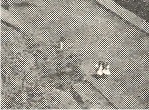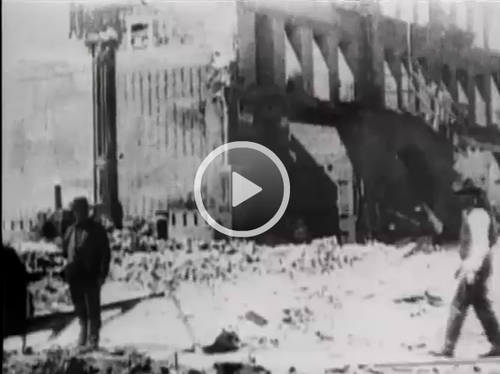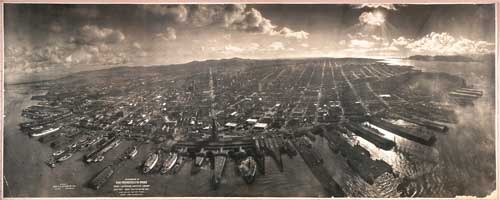JF Ptak Science Books Post 623 Blog Bookstore
The following two images were found in the Illustrated London News for 30 April 1906, and shows the "shanty town" built near the site of the major destruction in San Francisco following the earthquake of 18 April 1906. Actually the tragedy is more appropriately called the "San Francisco Fire" of 1906, as the major destruction was caused by the raging fires set off by the earthquake. The end result was 485 or so blocks of the city were destroyed leaving a quarter-million people homeless. That this orderly development was referred to as a "shanty town" by a sniffy Brit reporter is appalling--unless of course the offending word meant something different 103 years ago. It looks orderly and well-developed to me. I also happened to notice two small girls in the detail--just about the only people in the picture. They could still be alive....
The bottom two pictures were taken during the conflagration: the first was the fire still raged, and the second was made days after the fire from a tethered balloon observation point.
I made myself 6-foot-long prints of these images; nearly every 2x2 inch area of the enlargement is a picture in itself. These images are clickable and will expand if you click in the expanded version.
For a contemporary film of the event via the Library of Congress, see here: http://loc.gov/item/00694425
Panoramic images via the Library of Congress Prints and Photographs Division, see the following link for these and a number of others: http://loc.gov/search/?in=&q=panorama+san+francisco+fire&new=true&st=
A few eyewitness reports, from the Eyewitnesstohistory.com website:
"Of a sudden we had found ourselves staggering and reeling. It was as if the earth was slipping gently from under our feet. Then came the sickening swaying of the earth that threw us flat upon our faces. We struggled in the street. We could not get on our feet. Then it seemed as though my head were split with the roar that crashed into my ears. Big buildings were crumbling as one might crush a biscuit in one's hand. Ahead of me a great cornice crushed a man as if he were a maggot - a laborer in overalls on his way to the Union Iron Works with a dinner pail on his arm." (P. Barrett).
"When the fire caught the Windsor Hotel at Fifth and Market Streets there were three men on the roof, and it was impossible to get them down. Rather than see the crazed men fall in with the roof and be roasted alive the military officer directed his men to shoot them, which they did in the presence of 5,000 people." (Max Fast).
"The most terrible thing I saw was the futile struggle of a policeman and others to rescue a man who was pinned down in burning wreckage. The helpless man watched it in silence till the fire began burning his feet. Then he screamed and begged to be killed. The policeman took his name and address and shot him through the head." (Adolphus Busch).
SUMMARY of the film (from the Library of Congress website):
This film shows the aftermath of the San Francisco earthquake of April 18, 1906, and the devastation resulting from the subsequent three-day fire. The 8.3 magnitude earthquake struck at 5:12am and was centered along the San Andreas Fault, which slices through coastal California. Most of the cities of central California were badly damaged. San Francisco, with thousands of unreinforced brick buildings - and thousands more closely-spaced wooden Victorian dwellings - was poorly prepared for a major fire. Collapsed buildings, broken chimneys, and a shortage of water due to broken mains led to several large fires that soon coalesced into a city-wide holocaust. The fire swept over nearly a quarter of the city, including the entire downtown area. Dynamite was used with varying success to prevent the fire from spreading westward. Over 3,000 people are now estimated to have died as a result of the disaster. For the surviving refugees, the first few weeks were hard; as aid poured in from around the country, thousands slept in tents in city parks, and all citizens were asked to do their cooking in the street. A severe shortage of public transportation made a taxicab out of anything on wheels. Numerous businesses relocated teporarily in Oakland and many refugees found lodgings outside the city. Reconstruction of the city proceeded at a furious pace and by 1908, San Francisco was well on the way to recovery. The scenes in the film are preceded by titles, many of which are sensationalized. One entire scene showing a family eating in the street was almost certainly staged for the camera. The film was probably made in early May, as one scene can be precisely dated to May 9, and another to sometime after May 1









Those pictures are really great! It captured the sadness and the danger of the event.
Posted by: Cosmetic Dentist Fremont | 22 October 2009 at 10:04 PM